Extraction and Back-Extraction Behaviors of La(III), Ce(III), Pr(III), and Nd(III) Single Rare Earth and Mixed Rare Earth by TODGA
Abstract
:1. Introduction
2. Experimental
2.1. Materials and Experimental Instruments
2.2. Study on Extraction and Elution Characteristics of Single LREEs
2.2.1. Extraction Characteristics of LREEs
- (1)
- Effects of nitric acid concentrations and diluent types on extraction
- (2)
- Hydrochloric acid extraction
- (3)
- Time dependent extraction
- (4)
- Effects of different rare earth concentrations on extraction
2.2.2. Back-Extraction Characteristics of LREEs
- (1)
- Hydrochloric acid extraction
- (2)
- Time-dependent elution
- (3)
- Phosphoric acid and acetic acid elution
- (4)
- Mixed hydrochloric acid and nitric acid back-extraction
2.3. Extraction and Separation Characteristics of Mixed LREEs
2.3.1. Preparation of Loading Rare Earth System
2.3.2. Effect of LREE Concentration on Separation Effect of Mixed Rare Earth
2.3.3. Back-Extraction of Low-Concentration Rare Earth in Aqueous Phase and Organic Phase
3. Results and Discussion
3.1. Effects of Nitric Acid Concentrations and Diluent Types on Extraction Using TODGA
3.1.1. Effects of Hydrochloric Acid Concentrations on Extraction Using TODGA
3.1.2. Effects of Extraction Time on Extraction Characteristics Using TODGA
3.1.3. Effects of Different Rare Earth Concentrations on Extraction
3.1.4. IR Spectrum of Organic Phase after Extraction Using TODGA
3.2. Back-Extraction Characteristics of Rare Earth Using TODGA
3.2.1. Effects of Hydrochloric Acid Concentrations on Back-Extraction Using TODGA
3.2.2. Effects of Time on the Back-Extraction
3.2.3. Effects of the Concentrations of Phosphate Acid and Acetic Acid on Back-Extraction
3.2.4. Effects of Concentrations of Mixed Hydrochloric Acid and Nitric Acid on Back-Extraction
3.3. The Extraction and Separation of Mixed LREEs Using TODGA
3.3.1. Effect of High-Concentration Rare Earth Mixture on Separation
- (1)
- The first small cycle operation of the high-concentration rare earth mixed liquid system
- (2)
- The second small cycle operation of the high-concentration rare earth mixed liquid system
- (3)
- The third small cycle operation of the high-concentration rare earth mixed liquid system
3.3.2. Effect of Low-Concentration Rare Earth Mixture in Aqueous Phase on Separation
- (1)
- The first small cycle operation of the low-concentration rare earth mixed liquid system
- (2)
- The second small cycle operation of the low-concentration rare earth mixed liquid system
- (3)
- The third small cycle operation of the low concentration rare earth mixed liquid system
3.3.3. Reverse Extraction of Low-Concentration Rare Earth in Aqueous Phase and Organic Phase Using Hydrochloric Acid and Nitric Acid Mixture
- (1)
- The first operation of the low-concentration rare earth mixed liquid system
- (2)
- The first small cycle of the aqueous phase after the elution of low-concentration rare earth mixed liquid system
- (3)
- The second small cycle of the aqueous phase after elution of the low-concentration rare earth mixed liquid system
- (4)
- The third small cycle of the aqueous phase after elution of the low concentration rare earth mixed liquid system
- (5)
- The first small cycle of the organic phase after elution of the low-concentration rare earth mixed liquid system
- (6)
- The second small cycle of the organic phase after elution of the low-concentration rare earth mixed liquid system
- (7)
- The third small cycle of the organic phase after elution of the low-concentration rare earth mixed liquid system
4. Conclusions
Author Contributions
Funding
Institutional Review Board Statement
Informed Consent Statement
Data Availability Statement
Acknowledgments
Conflicts of Interest
References
- Sasaki, Y.; Choppin, R. Solvent Extraction of Eu, Th, U, Np and Am with N,N′-Dimethyl-N,N′-dihexyl-3-oxapentanediamide and Its Analogous Compounds. Anal. Sci. 1996, 12, 225–230. [Google Scholar]
- Chen, Z.-L.; Yang, X.-Y.; Song, L.-J.; Wang, X.-Y.; Xiao, Q.; Xu, H.-W.; Feng, Q.-X.; Ding, S.-D. Extraction and complexation of trivalent rare earth elements with tetraalkyldiglycolamides. Inorg. Chim. Acta 2020, 513, 119928. [Google Scholar] [CrossRef]
- Barrat, J.-A.; Bayon, G.; Wang, X.; Le Goff, S.; Rouget, M.-L.; Gueguen, B.; Ben Salem, D. A new chemical separation procedure for the determination of rare earth elements and yttrium abundances in carbonates by ICP-MS. Talanta 2020, 219, 121244. [Google Scholar] [CrossRef]
- Gergoric, M.; Ekberg, C.; Steenari, B.-M.; Retegan, T. Separation of Heavy Rare-Earth Elements from Light Rare-Earth Elements Via Solvent Extraction from a Neodymium Magnet Leachate and the Effects of Diluents. J. Sustain. Metall. 2017, 3, 601–610. [Google Scholar] [CrossRef] [Green Version]
- Borowiak, K.; Lisiak, M.; Kanclerz, J.; Budka, A.; Mleczek, M.; Niedzielski, P.; Adamska, A.; Janicka, E. Relations between rare earth elements accumulation in Taraxacum officinale, L. and land use in an urban area-A preliminary study. Ecol. Indic. 2018, 94, 22–27. [Google Scholar] [CrossRef]
- Chen, F. Processing process and its application of rare earth elements. China Strateg. Emerg. Ind. 2017, 20, 70–72. [Google Scholar]
- Chen, L.; Wu, Y.; Dong, H.; Meng, M.; Li, C.; Yan, Y.; Chen, J. An overview on membrane strategies for rare earths extraction and separation. Sep. Purif. Technol. 2018, 197, 70–85. [Google Scholar] [CrossRef]
- Hao, B.-H.; Duan, Q.-T.; He, Q.; Li, H.-N. Preparation of “rare earth-aluminum nano-catalyst”tail gas and its application in tail gas purification. Contemp. Chem. Ind. 2013, 6, 810–812+816. [Google Scholar]
- Zhong, H.-X.; Wang, J.; Zhang, Q.; Meng, F.; Bao, D.; Liu, T.; Yang, X.-Y.; Chang, Z.-W.; Yan, J.-M.; Zhang, X.-B. In Situ Coupling FeM (M = Ni, Co) with Nitrogen-Doped Porous Carbon toward Highly Efficient Trifunctional Electrocatalyst for Overall Water Splitting and Rechargeable Zn-Air Battery. Adv. Sustain. Syst. 2017, 1, 1700020. [Google Scholar] [CrossRef]
- Suzuki, T.; Sackmann, A.; Oprea, A.; Weimar, U.; Bârsan, N. Chemoresistive CO2 Gas Sensors Based On La2O2CO3: Sensing Mechanism Insights Provided by Operando Characterization. ACS Sens. 2020, 5, 2555–2562. [Google Scholar] [CrossRef]
- Xie, Y.-L.; Shen, B.; Zhou, B.-S.; Liu, M.; Fei, H.-T.; Sun, J.; Dong, B. Progress in research on rare-earth upconversion luminescent nanomaterials and bio-sensing. Chin. J. Lasers 2020, 47, 0207017. [Google Scholar]
- Wu, C.-Q.; Lin, X.; Jiang, L.-S.; Wang, Q.-M. A rare earth fluorescent signal driven sensor for mercury based on sulfur and nitrogen co-doped carbon dots. Chin. J. Lumin. 2021, 42, 1267–1277. [Google Scholar] [CrossRef]
- Xie, F.; Zhang, T.A.; Dreisinger, D.; Doyle, F. A critical review on solvent extraction of rare earths from aqueous solutions. Miner. Eng. 2014, 56, 10–28. [Google Scholar] [CrossRef]
- Sun, G.; Cui, Y.; Yin, S.; Wang, Q.; Xu, R. Properties and mechanism of extraction of lanthanide elements by N,N,N′,N′-tetrabutylpropylamide. J. Inorg. Chem. 2008, 2, 265–269. [Google Scholar]
- Zhang, R.; Chen, W.; Huang, Z.; Wu, B.; Huang, F. Extraction of U (VI), Eu (III), Sr (II) and Fe (III) with amide compounds. J. Nucl. Radiochem. 2001, 23, 113. [Google Scholar]
- Ansari, S.-A.; Mohapatra, P.-K.; Manchanda, V.-K. Recovery of Actinides and Lanthanides from High-Level Waste Using Hollow-Fiber Supported Liquid Membrane with TODGA as the Carrier. Ind. Eng. Chem. Res. 2009, 18, 8605–8612. [Google Scholar] [CrossRef]
- Wessling, P.; Muellich, U.; Guerinoni, E.; Geist, A.; Panak, P.J. Solvent extraction of An(III) and Ln(III) using TODGA in aromatic diluents to suppress third phase formation. Hydrometallurgy 2020, 192, 105248. [Google Scholar] [CrossRef]
- Nave, S.; Modolo, G.; Madic, C.; Testard, F. N,N,N′,N′-Tetraoctyl-3-oxapentanediamide (TODGA) in n-Dodecane. Solvent Extr. Ion Exch. 2004, 22, 527–551. [Google Scholar] [CrossRef]
- Turanov, A.; Karandashev, V.; Boltoeva, M. Solvent extraction of intra-lanthanides using a mixture of TBP and TODGA in ionic liquid. Hydrometallurgy 2020, 195, 105367. [Google Scholar] [CrossRef]
- Yaita, T.; Herlinger, A.W.; Thiyagarajan, P.; Jensen, M. Influence of Extractant Aggregation on the Extraction of Trivalent f-Element Cations by a Tetraalkyldiglycolamide. Solvent Extr. Ion Exch. 2004, 22, 553–571. [Google Scholar] [CrossRef]
- Ansari, S.A.; Mohapatra, P.K.; Prabhu, D.R.; Manchanda, V.K. Evaluation of N,N,N′,N′-tetraoctyl-3-oxapentane-diamide (TODGA) as a mobile carrier in remediation of nuclear waste using supported liquid membrane. J. Membr. Sci. 2007, 298, 169–174. [Google Scholar] [CrossRef]
- Pathak, P.N.; Ansari, S.A.; Godbole, S.V.; Dhobale, A.R.; Manchanda, V.K. Interaction of Eu3+ with N,N,N′,N′-tetraoctyl diglycolamide: A time resolved luminescence spectroscopy study. Spectrochim. Acta A 2009, 73, 348–352. [Google Scholar] [CrossRef]
- Shimojo, K.; Kurahashi, K.; Naganawa, H. Extraction behavior of lanthanides using a diglycolamide derivative TODGA in ionic liquids. Dalton Trans. 2008, 37, 5083–5088. [Google Scholar] [CrossRef] [PubMed]
- Sasaki, Y.; Kitatsuji, Y.; Sugo, Y.; Asakura, T.; Kimura, T. Chemical Separation of Actinides from High Level Radioactive Liquid Waste Using Diglycol-amide (DGA) Compounds. In Proceedings of the GLOBAL 2007 Conference on Advanced Nuclear Fuel Cycles and Systems, Boise, ID, USA, 9–13 September 2007. [Google Scholar]
- Tachimori, S.; Sasaki, Y.; Suzuki, S. Modification of TODGA-n-Dodecane solvent with a monoamide for high loading of lanthanides(III) and actinides(III). Solvent Extr. Ion Exch. 2002, 20, 687–699. [Google Scholar] [CrossRef]
- Ansari, S.A.; Pathak, P.N.; Husain, M.; Prasad, A.K.; Parmar, V.S.; Manchanda, V.K. Extraction of actinides using N,N,N′,N′-tetraoctyl diglycolamide (TODGA): A thermodynamic study. Radiochim. Acta 2006, 94, 307–312. [Google Scholar] [CrossRef]
- Ellis, R.J.; Brigham, D.M.; Delmau, L.; Ivanov, A.S.; Williams, N.J.; Vo, M.N.; Reinhar, B.; Moyer, B.A.; Bryantsev, V.S. “Straining” to Separate the Rare Earths: How the Lanthanide Contraction Impacts Chelation by Diglycolamide Ligands. Inorg. Chem. 2017, 56, 1152–1160. [Google Scholar] [CrossRef]
- Guang, Y. Study on the Extraction Behavior of Rare Earth Elements by 3-Oxopentadiamide Extractants in Hydrochloric Acid System; Jinan University: Jinan, China, 2010. [Google Scholar]
- Qiu, L.; Pan, Y.; Zhang, W.; Gong, A. Application of a functionalized ionic liquid extractant tributylmethylammonium dibutyldiglycolamate ([A336][BDGA]) in light rare earth extraction and separation. PLoS ONE 2018, 13, e0201405. [Google Scholar] [CrossRef]
- Yuan, H.; Hong, W.; Zhou, Y.; Pu, B.; Gong, A.; Xu, T.; Yang, Q.; Li, F.; Qiu, L.; Zhang, W.; et al. Extraction and back-extraction behaviors of 14 rare earth elements from sulfuric acid medium by TODGA. J. Rare Earths 2018, 36, 642–647. [Google Scholar] [CrossRef]

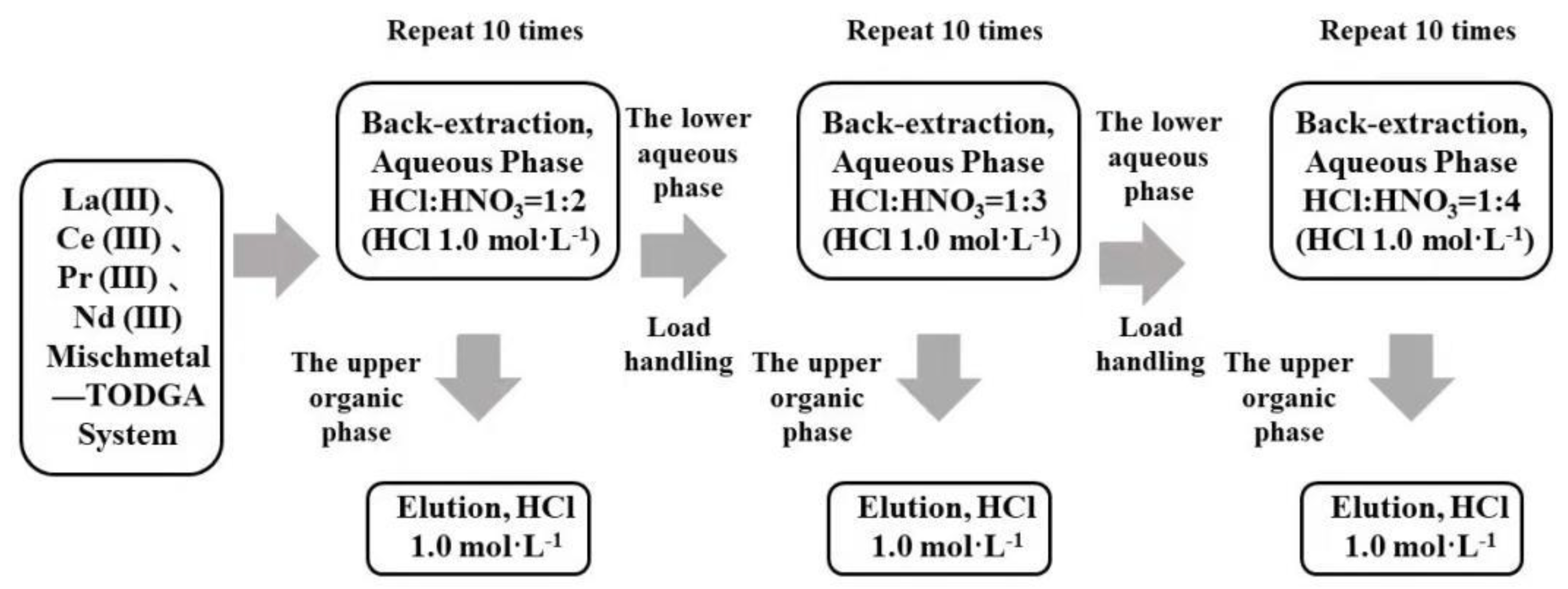

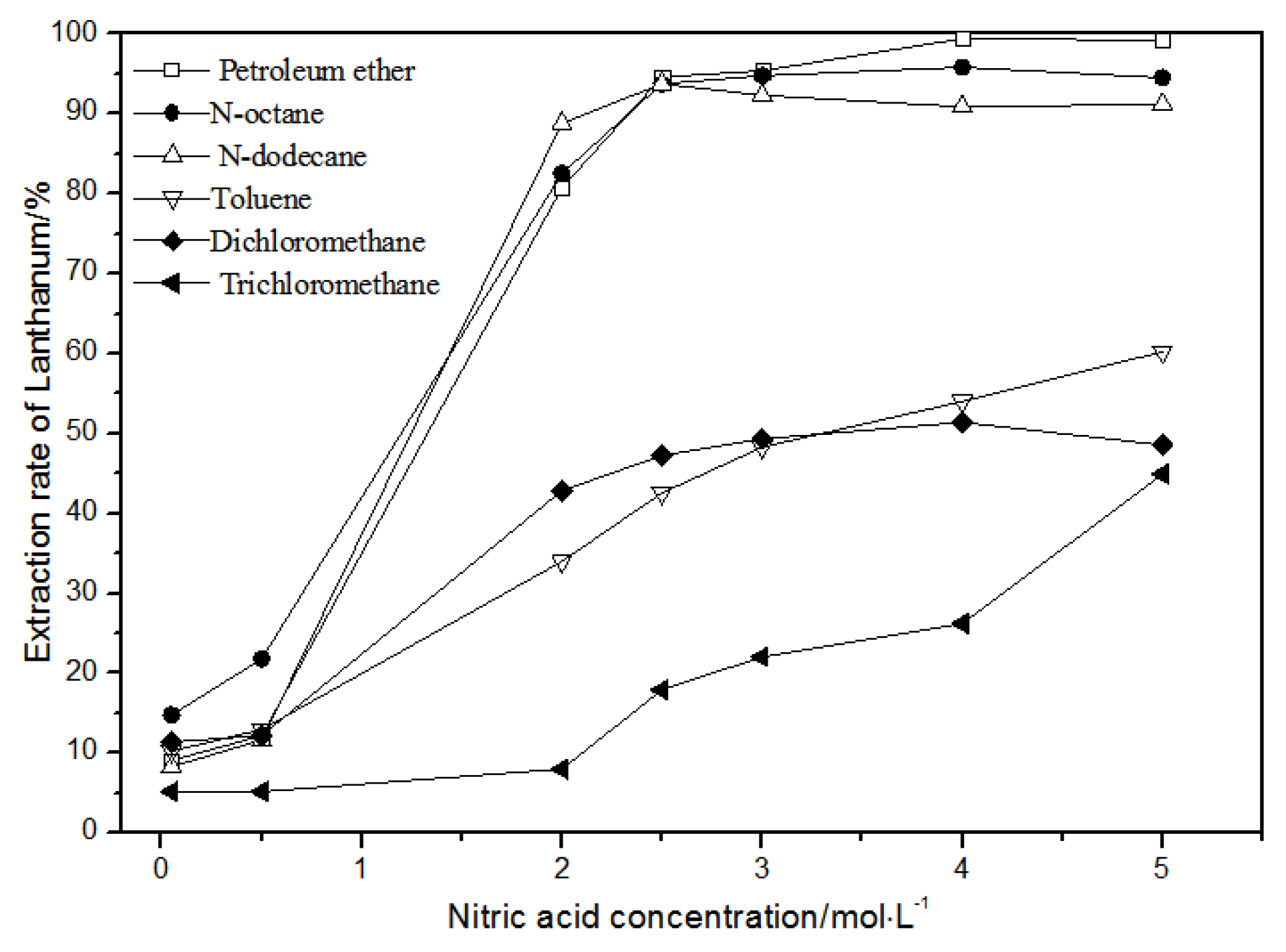

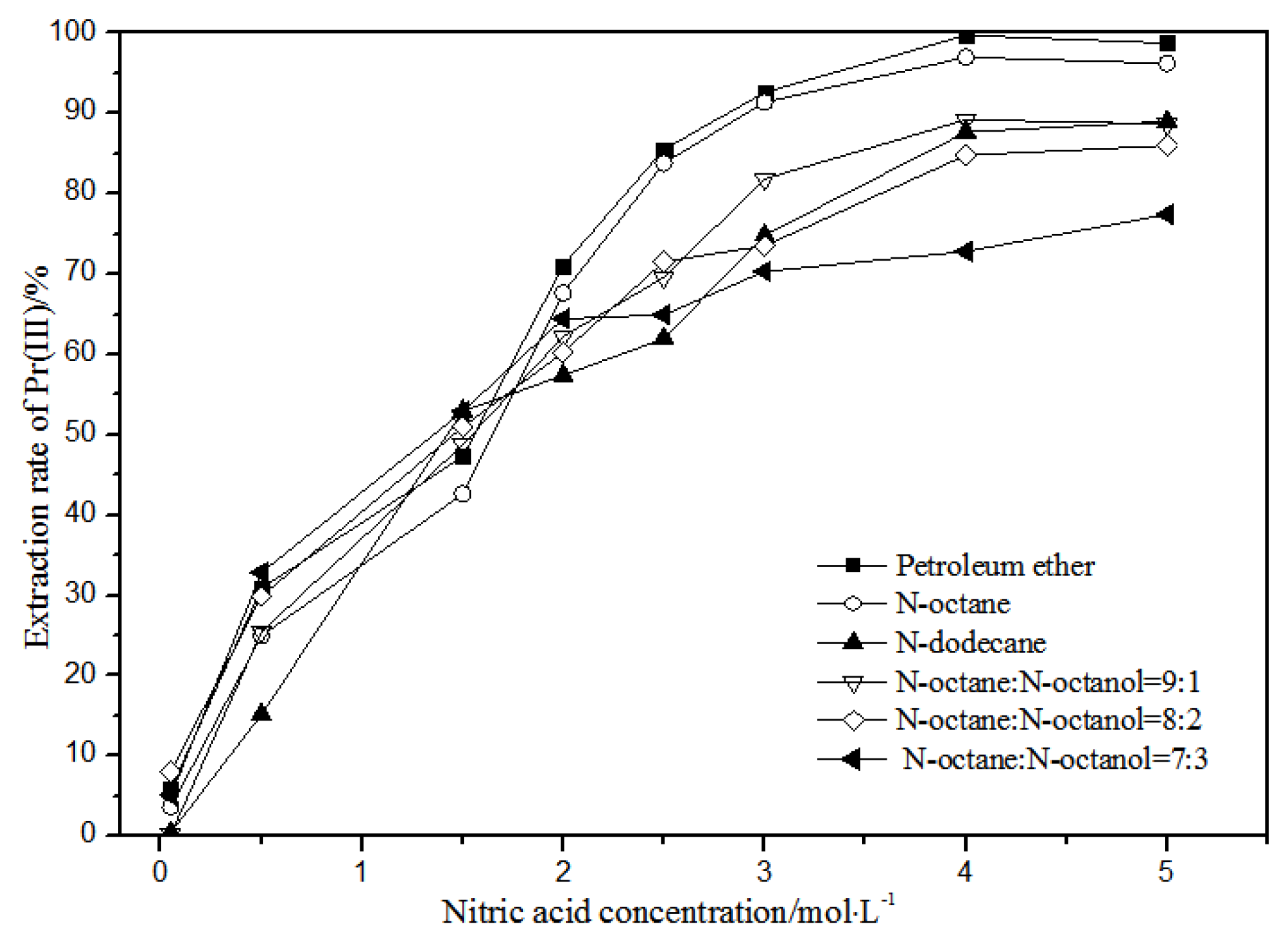
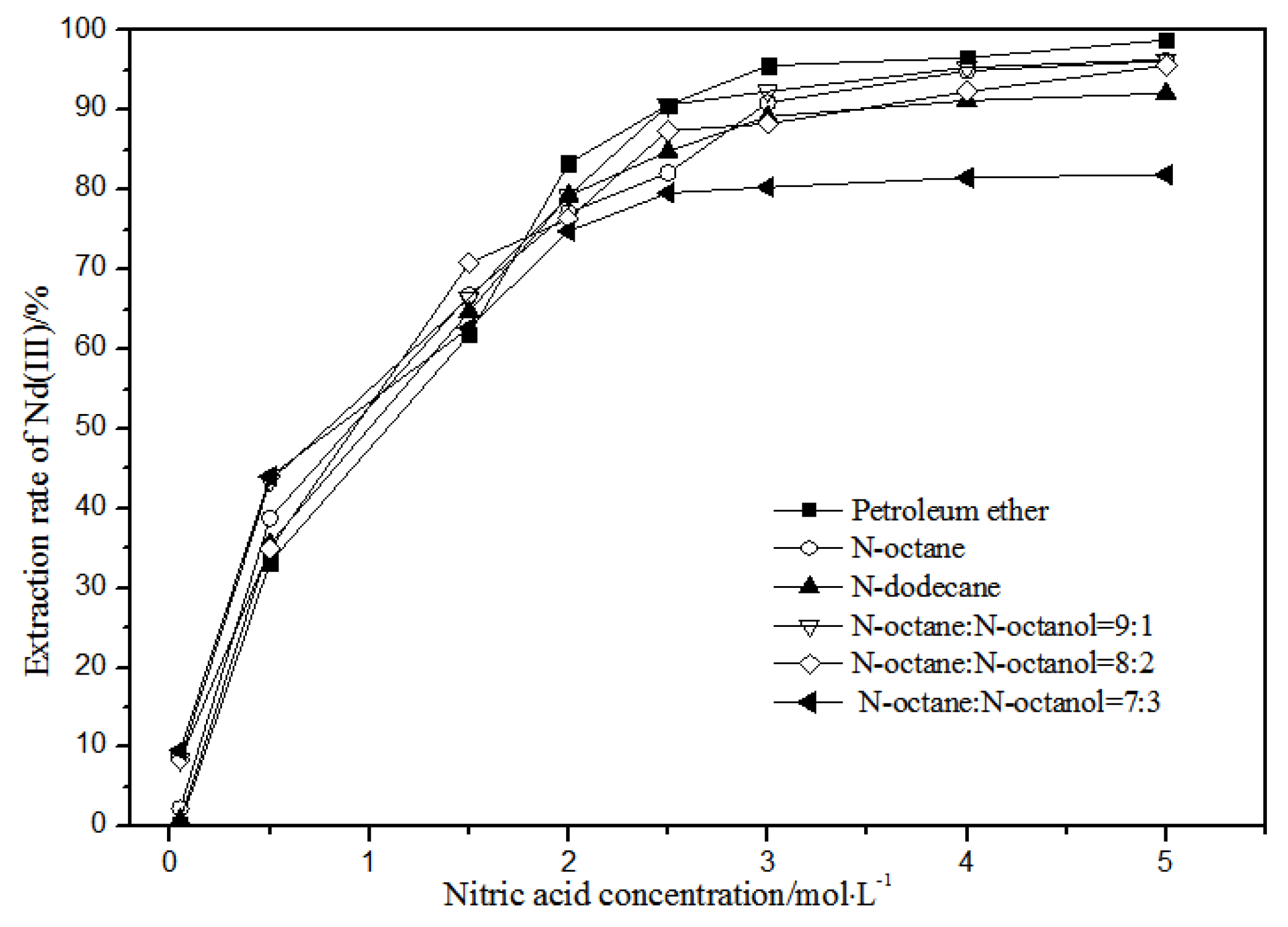


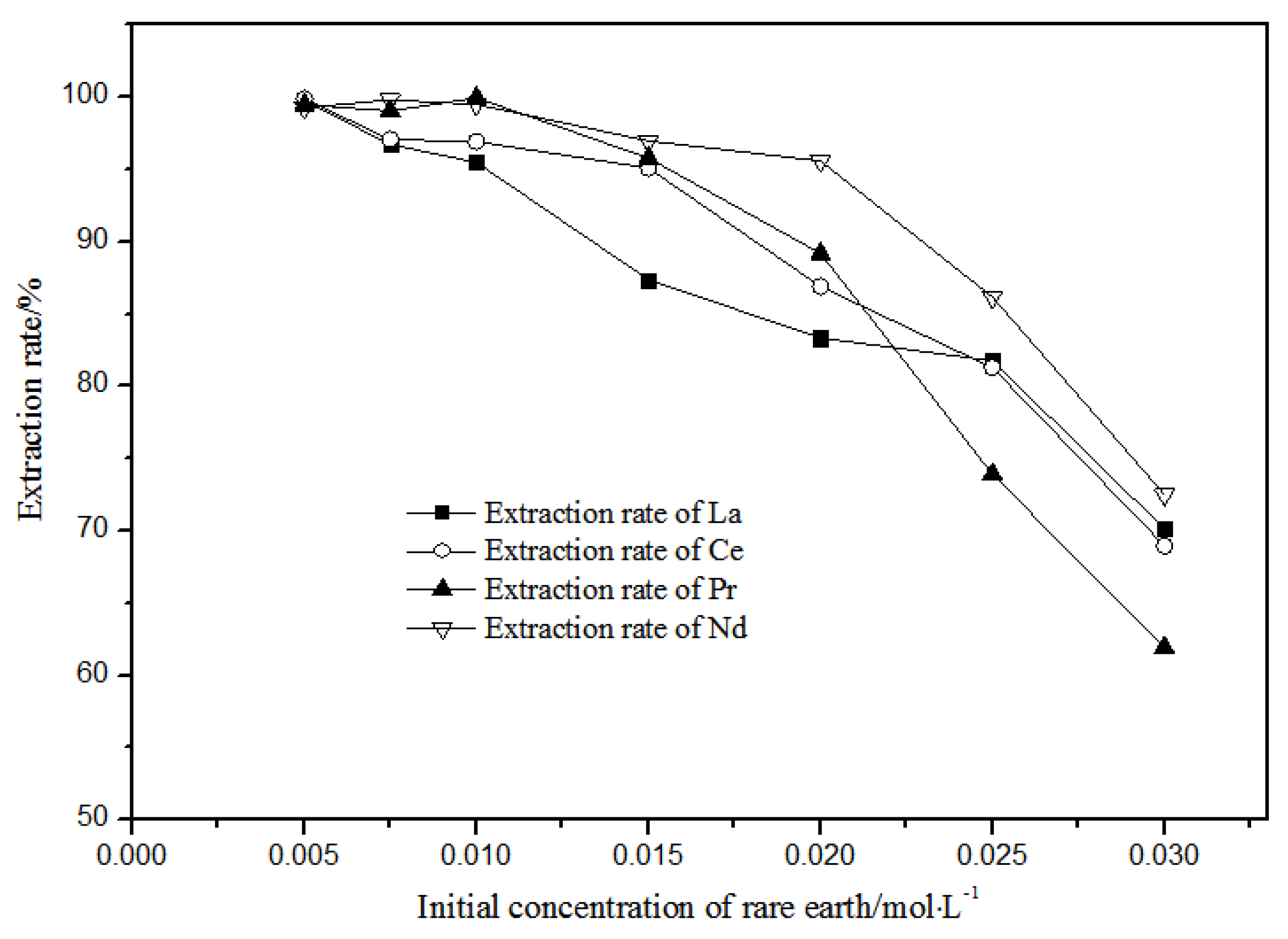
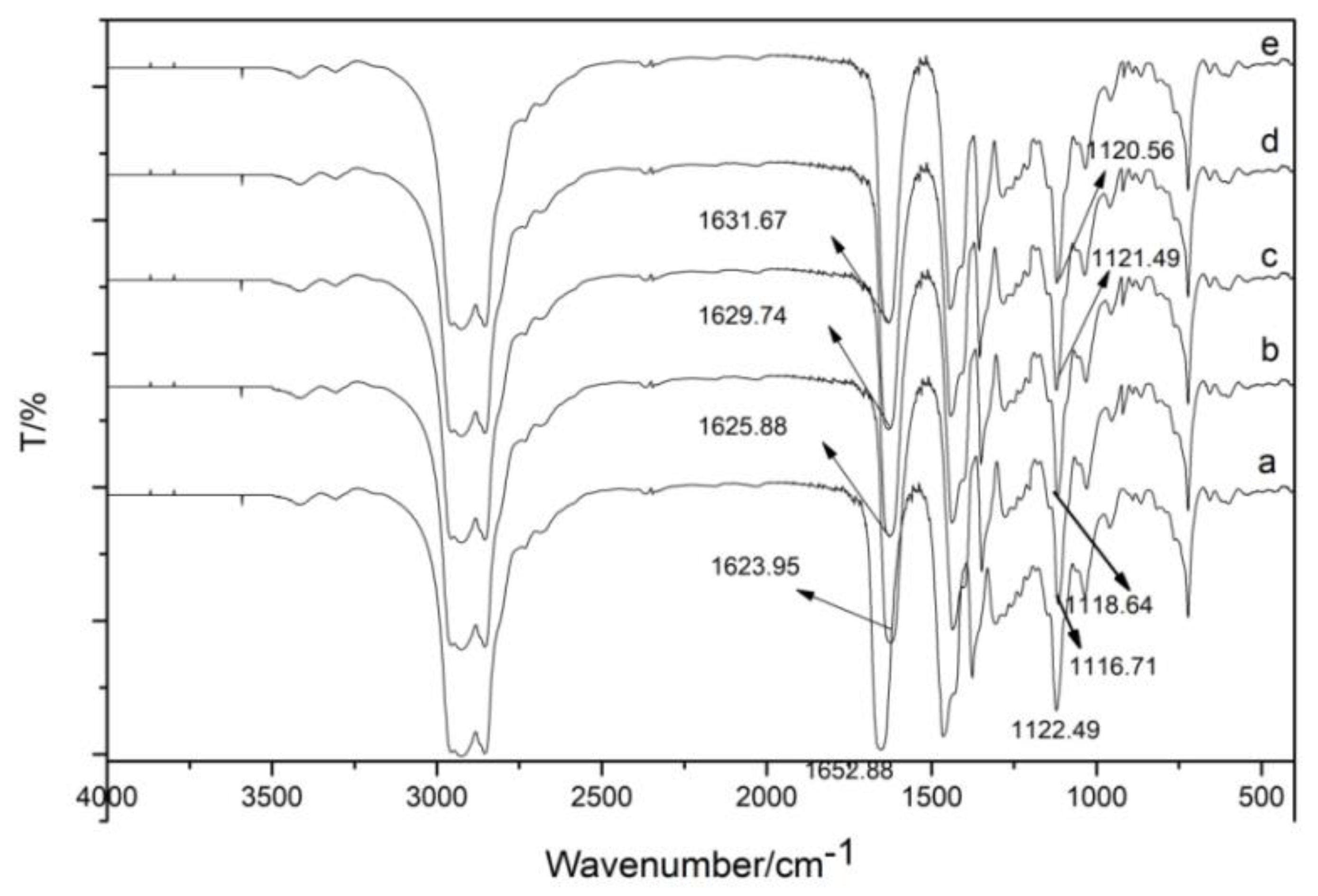
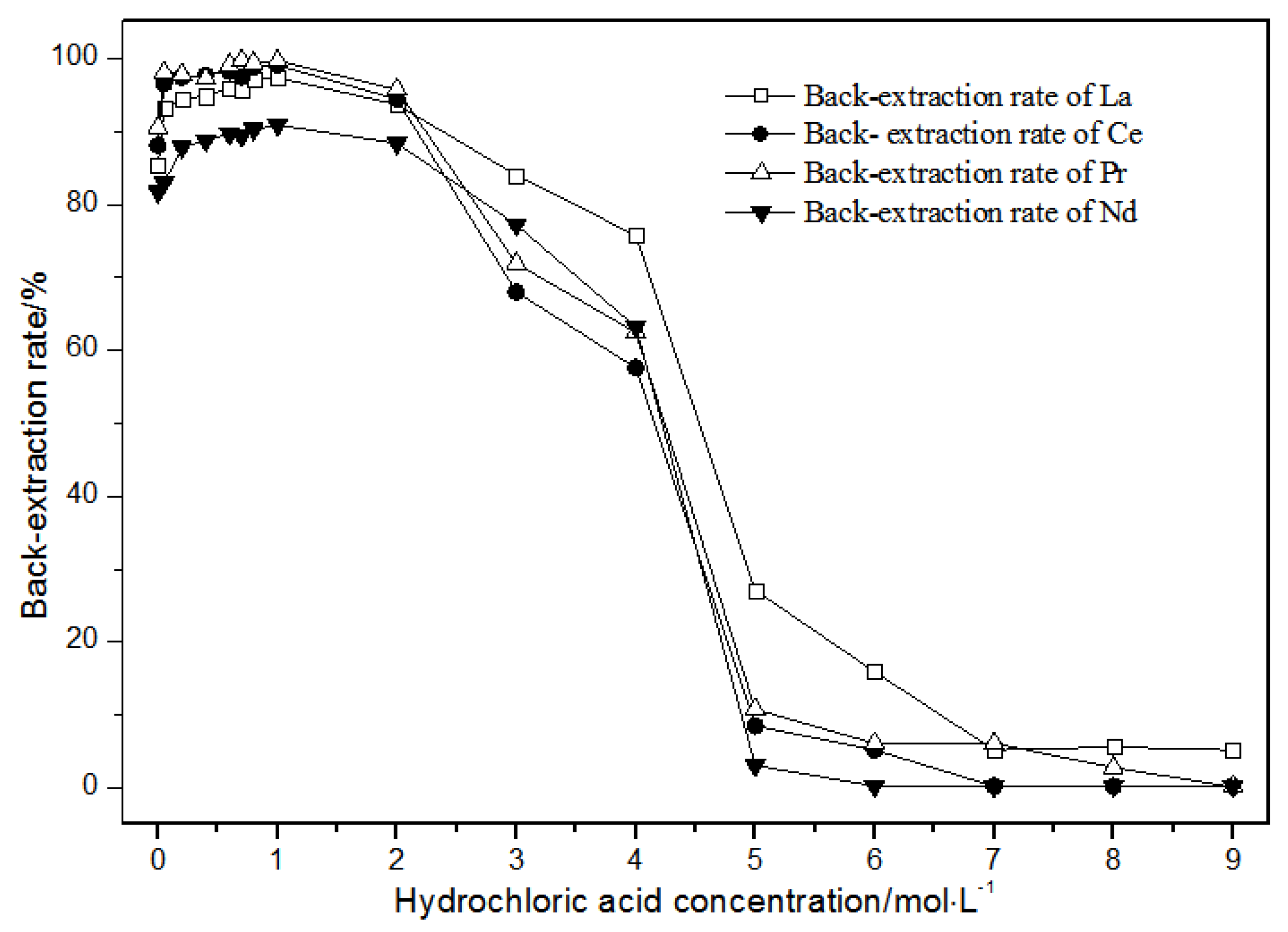


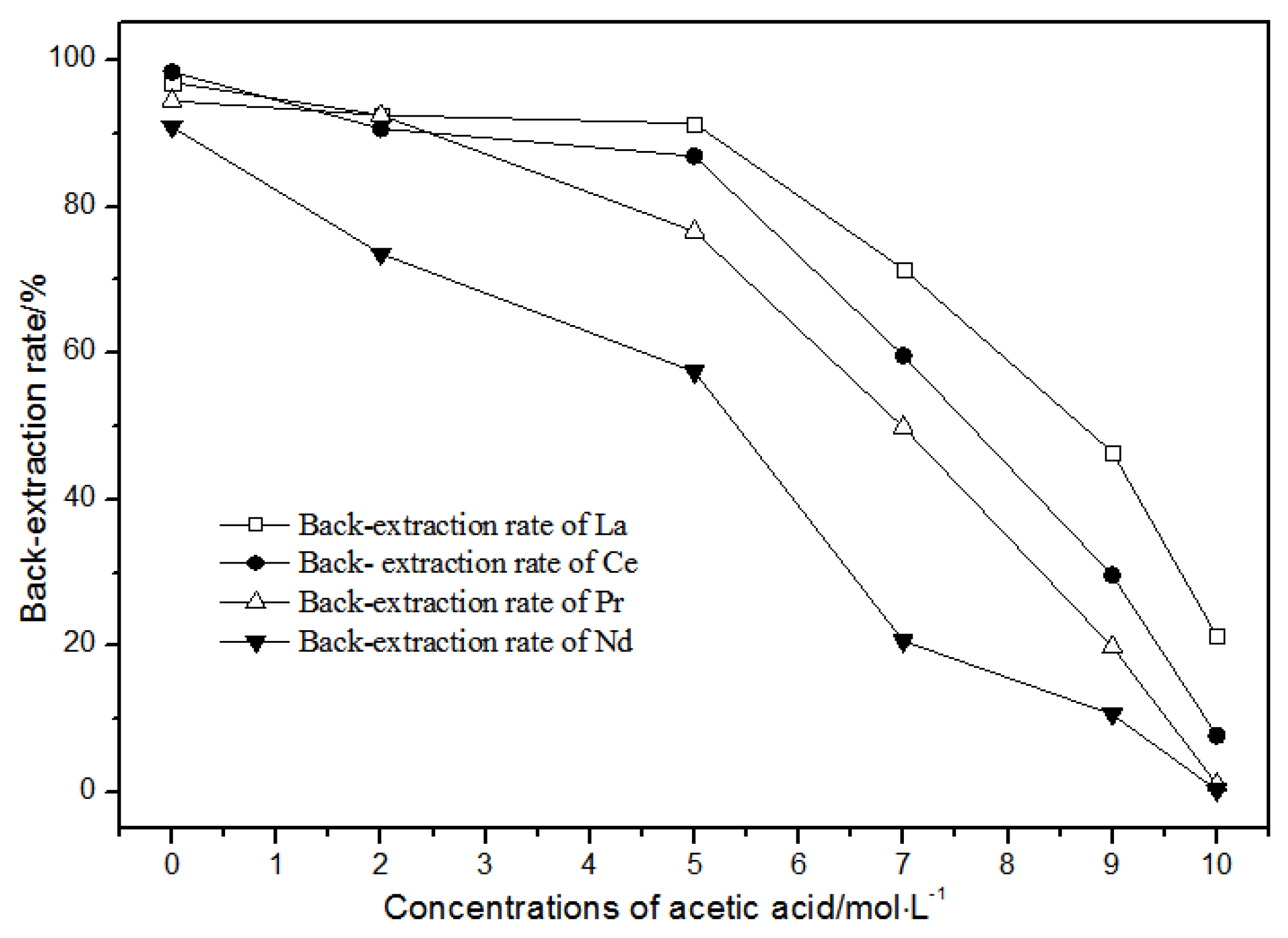
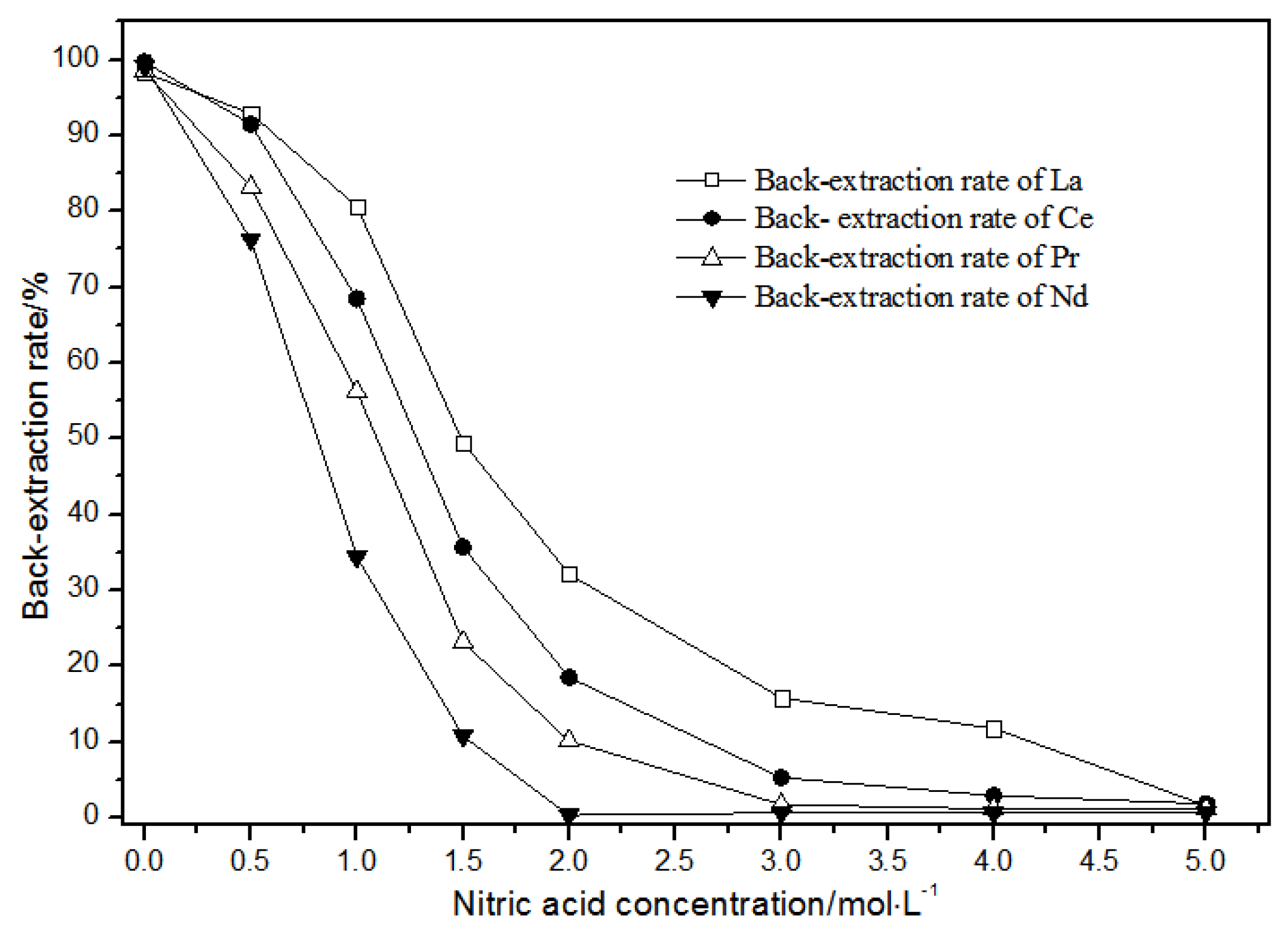

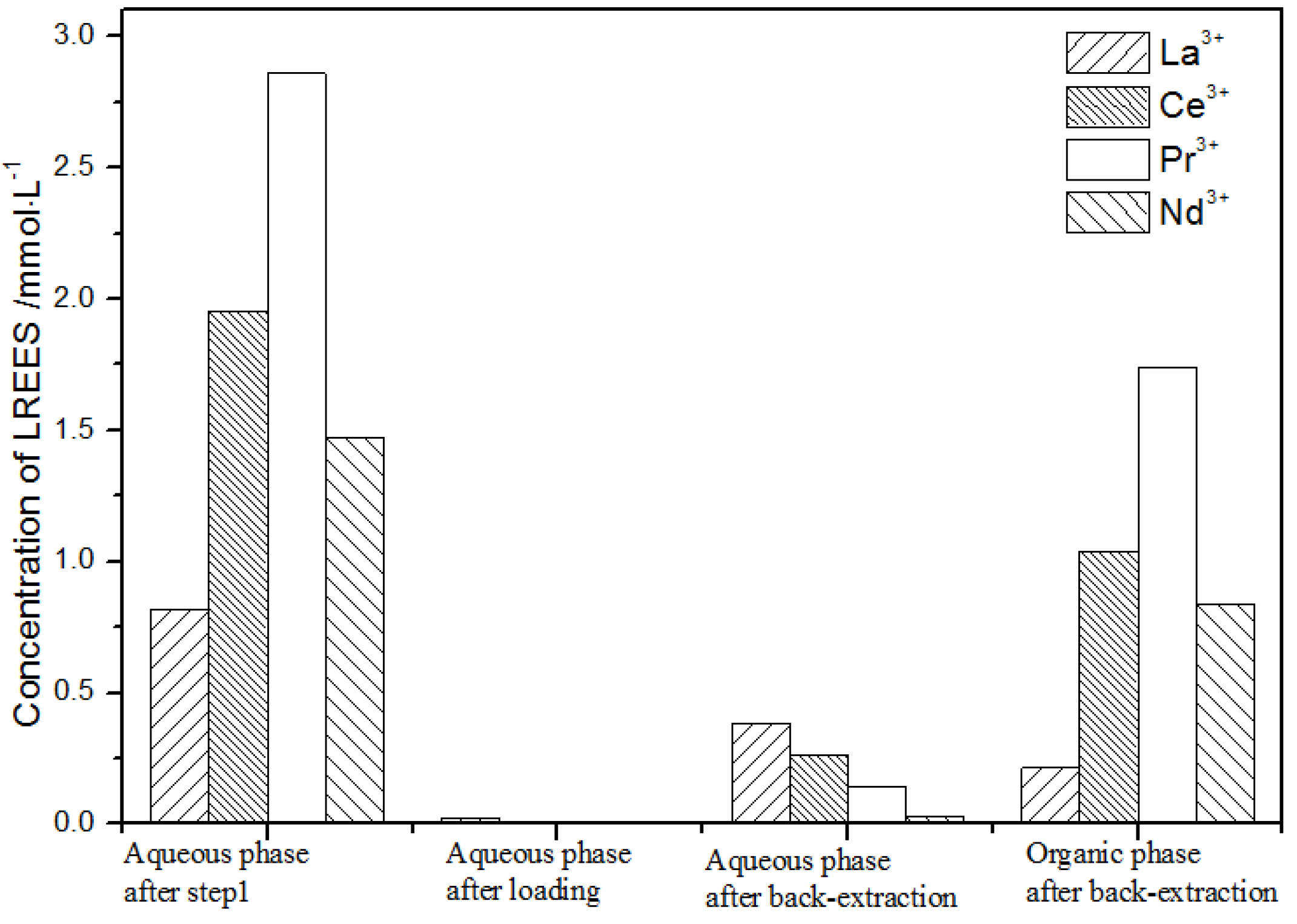
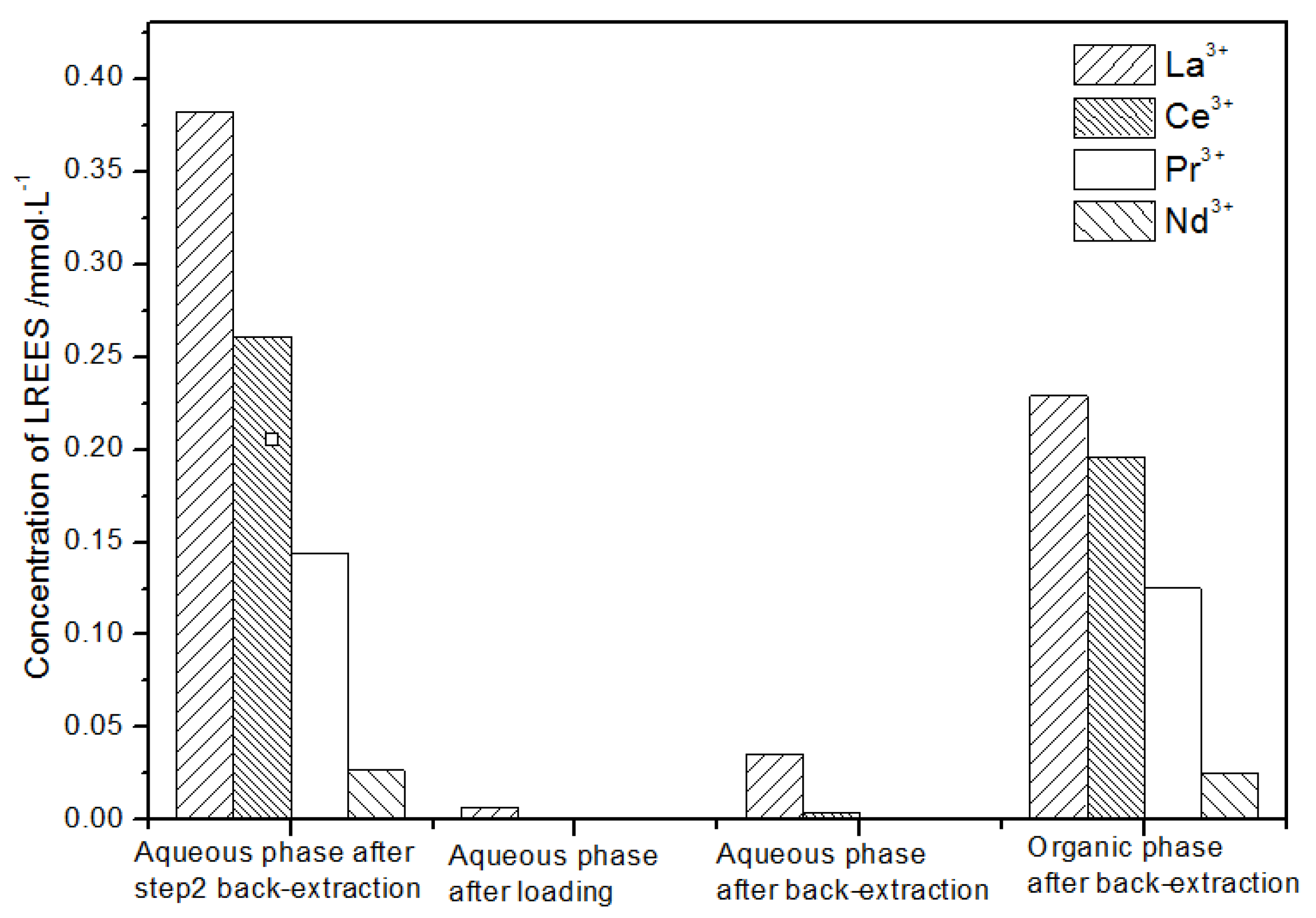

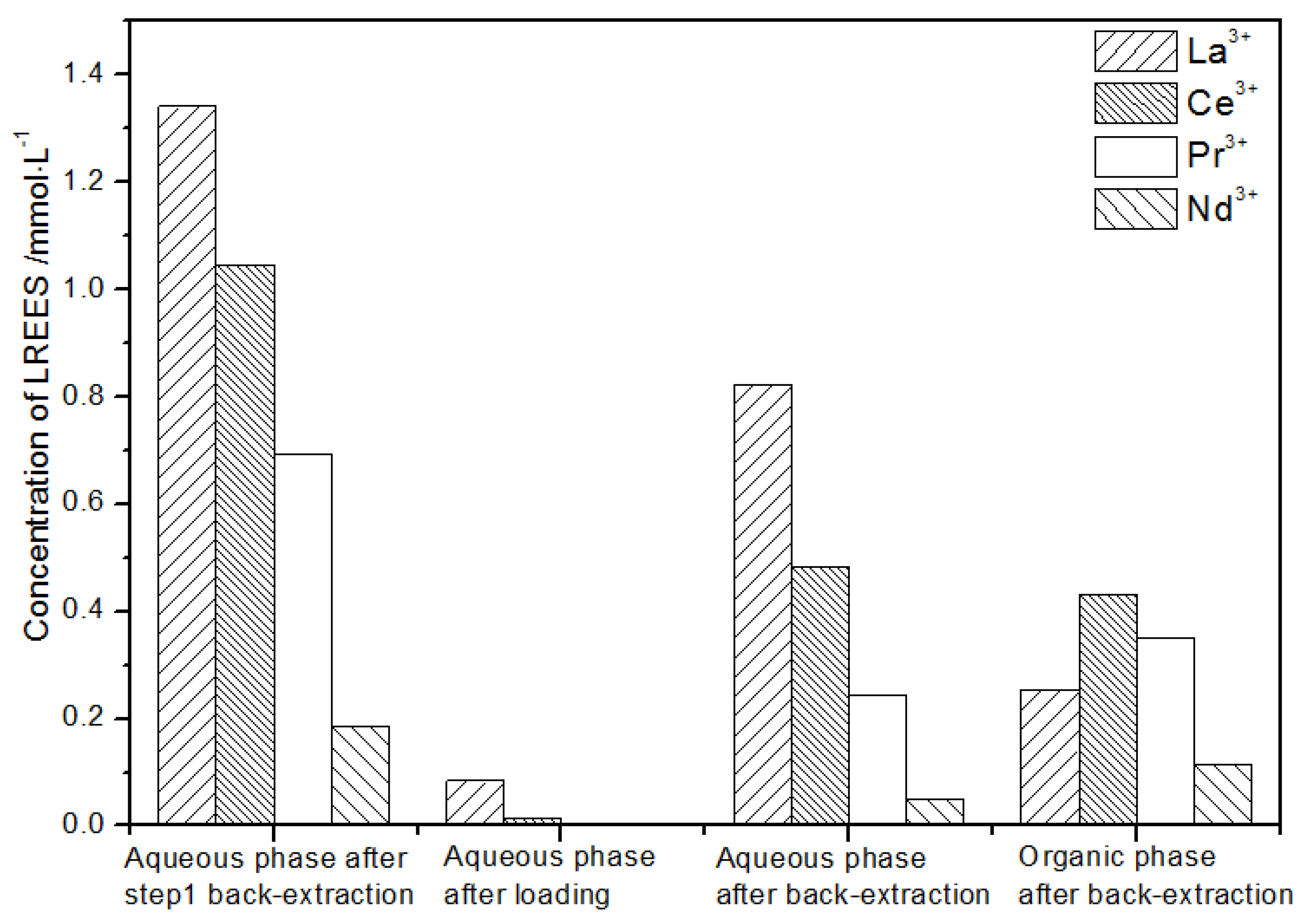
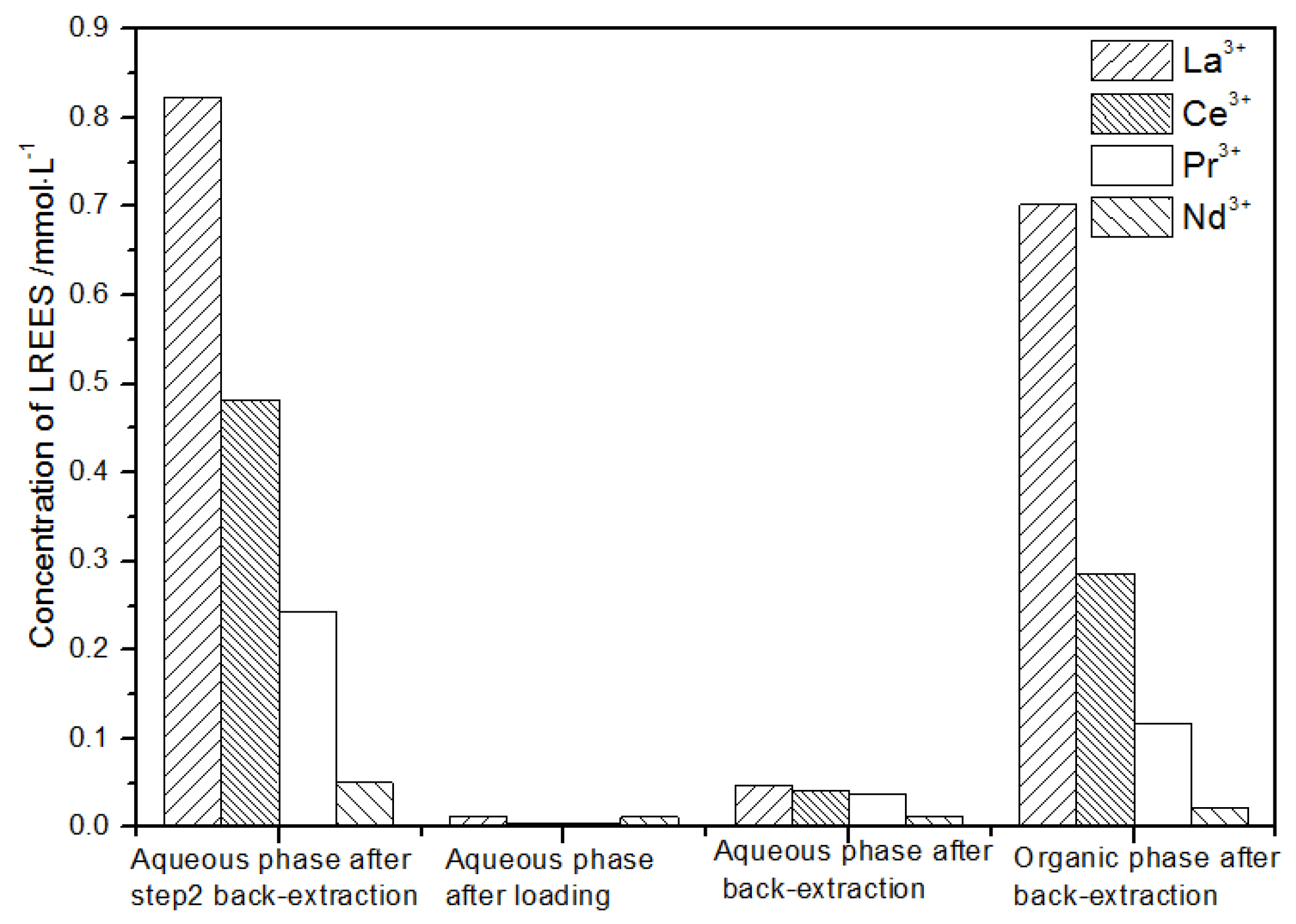
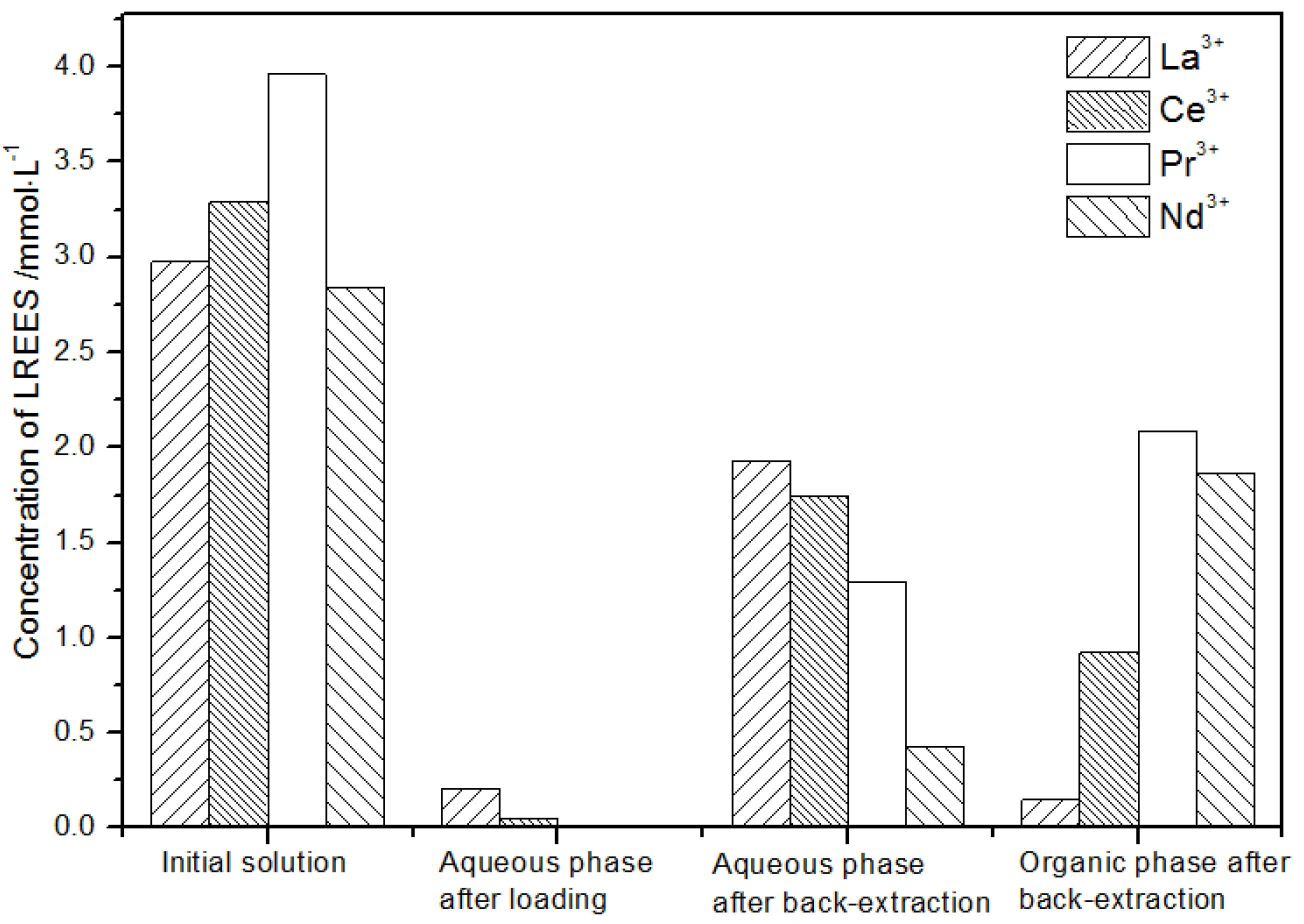

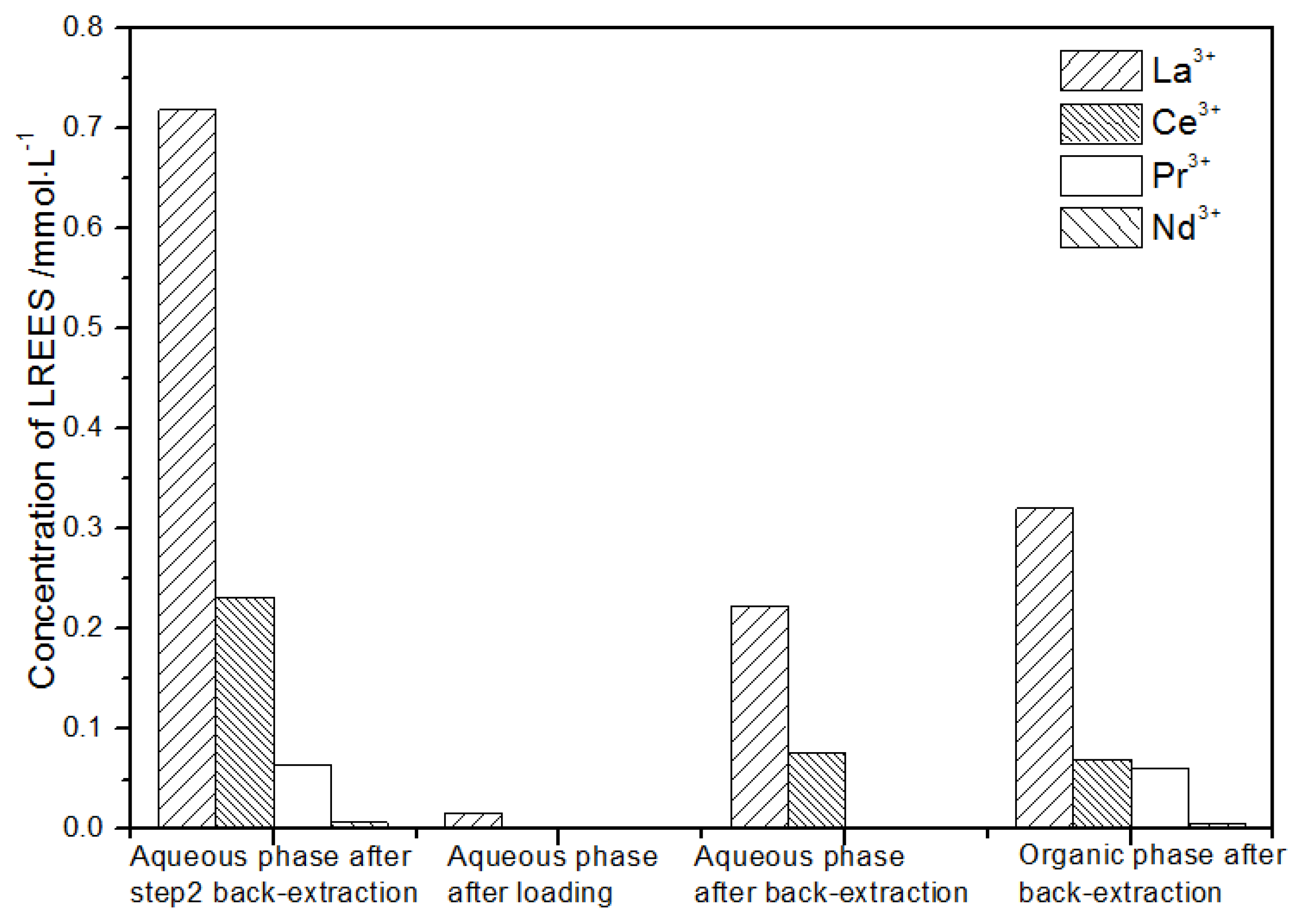


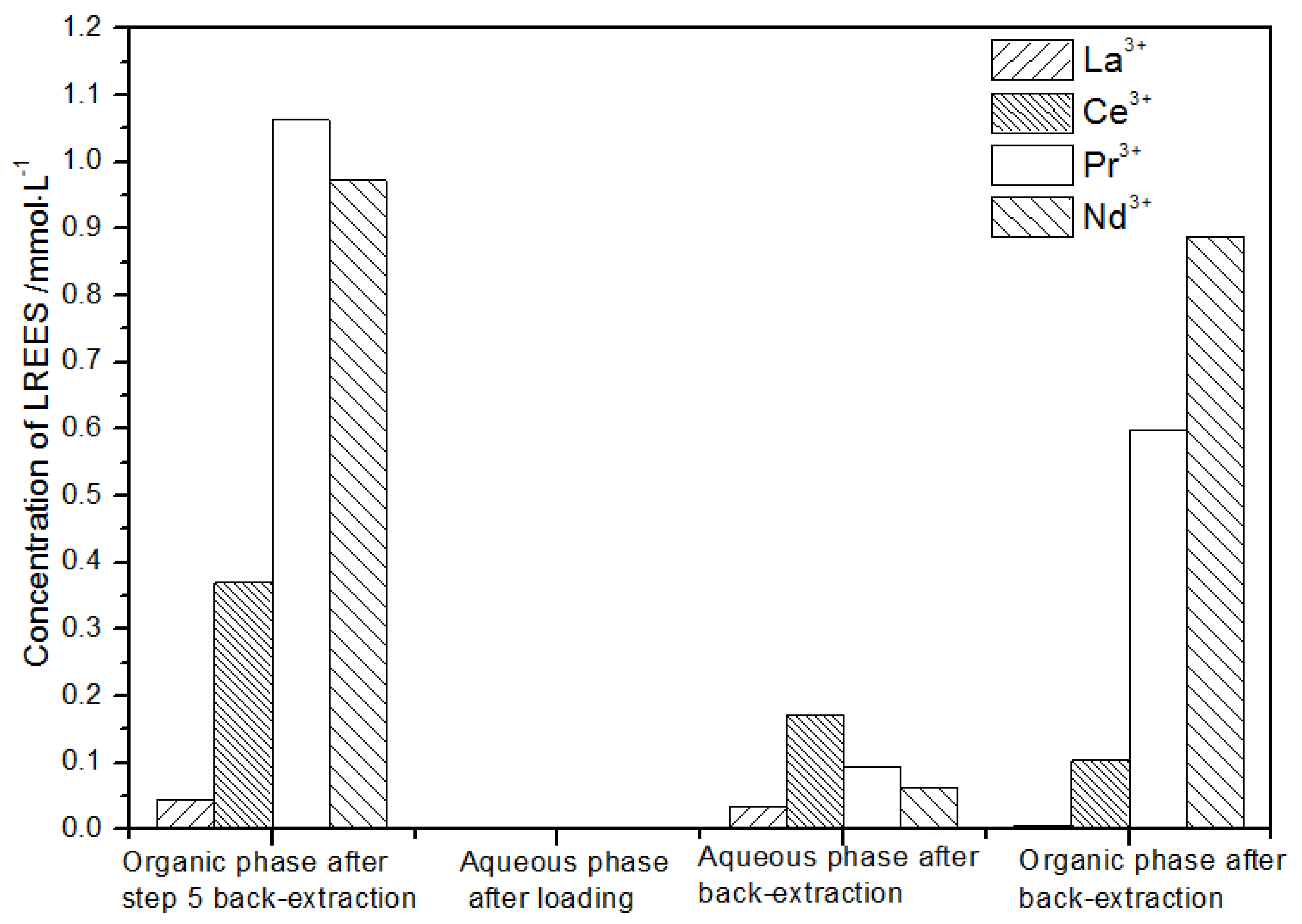

Publisher’s Note: MDPI stays neutral with regard to jurisdictional claims in published maps and institutional affiliations. |
© 2021 by the authors. Licensee MDPI, Basel, Switzerland. This article is an open access article distributed under the terms and conditions of the Creative Commons Attribution (CC BY) license (https://creativecommons.org/licenses/by/4.0/).
Share and Cite
Qiu, L.; Li, J.; Zhang, W.; Gong, A.; Yuan, X.; Liu, Y. Extraction and Back-Extraction Behaviors of La(III), Ce(III), Pr(III), and Nd(III) Single Rare Earth and Mixed Rare Earth by TODGA. Sensors 2021, 21, 8316. https://doi.org/10.3390/s21248316
Qiu L, Li J, Zhang W, Gong A, Yuan X, Liu Y. Extraction and Back-Extraction Behaviors of La(III), Ce(III), Pr(III), and Nd(III) Single Rare Earth and Mixed Rare Earth by TODGA. Sensors. 2021; 21(24):8316. https://doi.org/10.3390/s21248316
Chicago/Turabian StyleQiu, Lina, Jiandi Li, Weiwei Zhang, Aijun Gong, Xiaotao Yuan, and Yang Liu. 2021. "Extraction and Back-Extraction Behaviors of La(III), Ce(III), Pr(III), and Nd(III) Single Rare Earth and Mixed Rare Earth by TODGA" Sensors 21, no. 24: 8316. https://doi.org/10.3390/s21248316
APA StyleQiu, L., Li, J., Zhang, W., Gong, A., Yuan, X., & Liu, Y. (2021). Extraction and Back-Extraction Behaviors of La(III), Ce(III), Pr(III), and Nd(III) Single Rare Earth and Mixed Rare Earth by TODGA. Sensors, 21(24), 8316. https://doi.org/10.3390/s21248316





